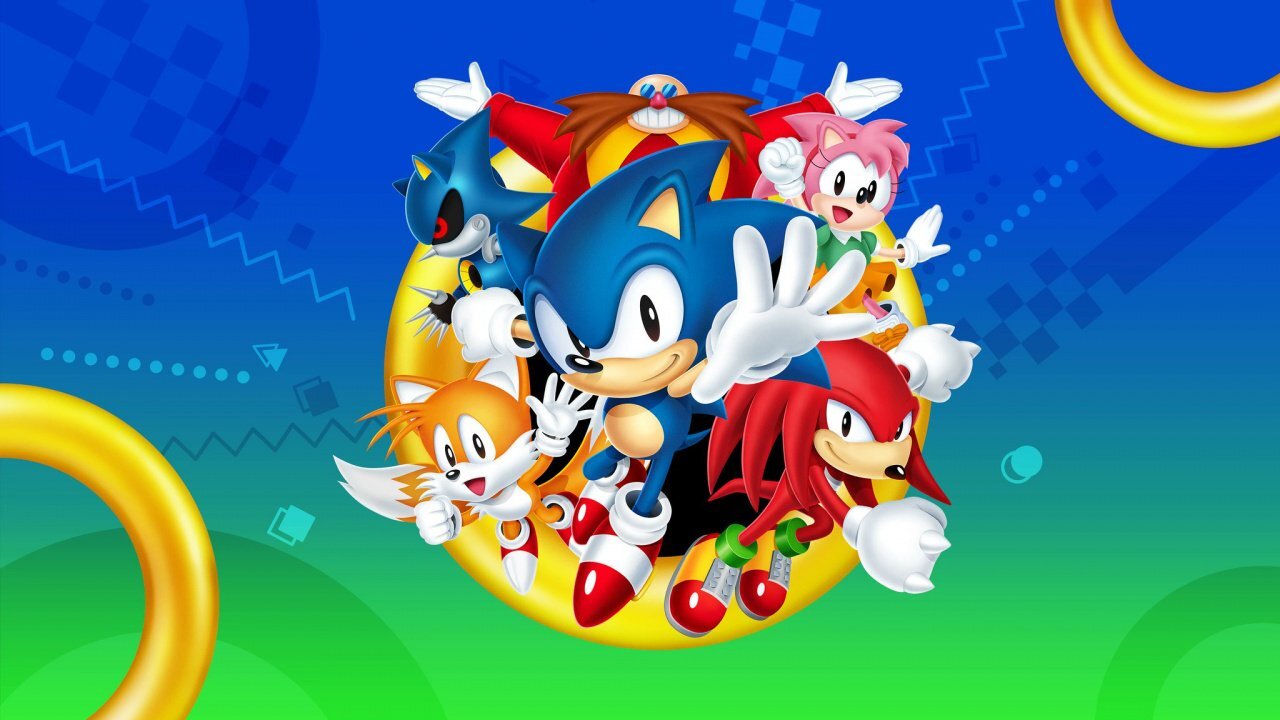There’s no denying the appeal of classic Sonic–the 16-bit Sonic games are some of the most memorable and influential platformers around. No matter what happens with modern-day Sonic, the old games remain as wondrous and as exciting as ever; a sort of gaming comfort food you can keep coming back to for years on end. It’s no surprise then that Sega has re-released the classic Sonic games many, many times over in various compiled and standalone forms. Sonic Origins is the latest such compilation, with its main selling point being that the games have been completely rebuilt by many of the staff behind the beloved Sonic Mania. And while the games remain as delightful as ever, the package as a whole feels a little disappointing.
Sonic Origins contains four (technically, five, since Sonic 3 and Sonic & Knuckles were sold separately) classic Sonic games from the 16-bit era: the original Sonic the Hedgehog, Sonic CD, Sonic 2, and the combined Sonic 3 & Knuckles. Rather than the emulation most re-releases utilize, each of the games has been rebuilt in a new engine (the Retro Engine) to play almost exactly like their original versions–though with various quality-of-life improvements added. Sonic 1, for example, has a spin dash and fixes the infamous instant-kill spike bug, while Sonic 2 adds a new level (the mythical Hidden Palace Zone), and Sonic 3 & Knuckles has touched-up sprite animation for its cinematics and the Super Sonic transformation, and so on. In addition, characters who might not have been playable in the original releases also are made available, such as Tails in Sonic CD and Knuckles in Sonic 1. (Knuckles still isn’t in Sonic CD, likely because his play style really doesn’t match the way that game’s levels flow.) Most of the original visuals and music remain intact, though some of Sonic 3’s music (long theorized to have the involvement of Michael Jackson) has been changed, likely for legal reasons.
All of the games have a new “anniversary mode” that increases the viewing area to 16:9 (as opposed to the original 4:3 aspect ratio) and removes the lives counter. You can still die, of course, but you’ll just respawn at the last checkpoint, making the threat of a looming Game Over moot. The lives counter is instead replaced by a coin counter. Coins can be collected within the games from power-up monitors, getting lots of rings, and clearing Special Stages. You can then spend these coins to unlock extras in Sonic Origins’ museum, or retry when you fail to get the Chaos Emerald in a Special Stage. It’s a great feature for Sonic 1 and Sonic CD, where opportunities to enter and clear a Special Stage are quite limited–less so for Sonic 2 and S3&K where opportunities are more plentiful early on and you can then blaze through the rest of the game as Super Sonic after getting a full emerald set.
If you prefer the old-fashioned handling of lives and special stages, however, you can choose to play the games in Classic Mode instead, complete with the original 4:3 aspect ratio, while still keeping all of the various additions and touch-ups. Every game now has brand-new and exceptionally well-done animation sequences in its opening and endings, as well as an unlockable Mirror Mode (which flips the levels to run right-to-left), a Boss Rush, and a Story Mode that allows you to play all of the games in sequence as one big Sonic adventure. Finally, Mission Mode sees you attempting various challenging tasks in modified classic stages to earn coins. There are some very fun and creative missions, but Sonic veterans will likely blow through them all really quickly–and the only way to get more of the “hard missions” is to fork over cash for some day-one DLC.
Not that you really need more missions to earn coins, as completing all of the base missions will give you a treasure trove of coins with which you can unlock practically all of the museum content easily, leaving you to sit on the rest of your earnings with practically nothing to use them on. The museum content is rather disappointing in general: There’s a lot of concept art that’s already been seen in other Sonic titles and collections, classic music remixes that have appeared in other games, like Super Smash Bros., Sonic Generations, and even the recent Sonic Forces, and animatics of the new intro and outro sequences. It feels like there could have been a lot more–where are all the commercials and weird Sonic media we haven’t seen since Sonic Jam way back on the Saturn, for example?
It’s not just the extras that feel a bit lacking, either. Sonic Origins has some puzzling issues and omissions that you wouldn’t expect in a retro compilation of this caliber. There’s no save-state/reload functionality, nor are there any screen filters that can help smooth the pixels into a nice CRT-like look. There is one “anti-aliasing” screen option that makes the screen look like it’s been smeared with petroleum jelly, but that’s it. The sound balance seems wonky at times too, with the base sound level a bit muffled while certain sound effects and sequences are way too loud in comparison.
It’s also disappointing that playing with the traditional life system limits you to the 4:3 aspect ratio. Similarly, oversights like wallpaper options for 4:3 being locked behind paid DLC and needing to replay standalone Sonic CD in order to unlock all of the stages for Time Attack, even when the game has been completed in Story Mode, are a dampener on the experience.
Don’t get me wrong–the games remain excellent, and the painstaking dedication to recreating the complex levels and gimmick interactions of the various Sonic titles is wonderful to behold. It warms this aged Sonic fan’s heart to see the faux-rotation of Special Stages and assorted stage objects made much more smooth, to see Super Sonic get new design-accurate animation frames instead of reusing a bunch of those belonging to regular Sonic, and to finally have a dedicated Super button in Sonic 3 and Knuckles so I can transform only when I really want to. And the long-lost Hidden Palace Zone, brought to life by the talented hands that created the fantastic levels of Sonic Mania, is like my childhood imagination made manifest. It’s a gorgeous stage filled with sleek curves and glowing gemstones, providing a delightful mix of unique enemies and gimmicks that give it a personality of its own–along with a very clever boss design at the end.
The long-lost Hidden Palace Zone, brought to life by the talented hands that created the fantastic levels of Sonic Mania, is like my childhood imagination made manifest
But even the recreations of the games themselves have some issues, with strange bugs that weren’t present in the originals. Partner-Tails in Sonic 2 has a bad habit of getting stuck in places and trying desperately to reach you for a very long time before his “fly back to Sonic” routine kicks in, leading to stages filled with the obnoxious background noise of constant jumping and spin-dashing. Some of the transitions in Sonic 3 & Knuckles don’t quite work right–I got stuck at the transition to Sandopolis 2 and could only proceed after pressing the options button. And something about the death/respawn checkpoint system in S3&K feels really off: I’ve had multiple instances where I’d die and not respawn at the stage start rather than a checkpoint I’d touched, or respawn with a shield intact after a pit or crushing death, and even see a good chunk of a stage’s checkpoints marked as touched before I even encountered them.
In terms of DLC, for an additional cost you can get a bunch of “hard” missions, some extra wallpapers for use in Classic Mode, additional music, and decorative extras and camera angles on the menu screens. Given the relative dearth of unlockable extras, charging money for these features leaves a sour taste in my mouth. With so many coins I’m not using, these feel perfect for including as unlocks I can earn through normal gameplay. Instead, it’s available at an extra fee to bolster an already unsatisfying offering.
I know a lot of my problems with Sonic Origins sound like nitpicks, but I adore these games and I want to see them restored and presented with joy and reverence as the masterpieces they are–not tainted with frivolous DLC that should be unlockables and lackluster presentation. Sonic Origins comes close to being the definitive classic Sonic experience, but stumbles just before the finish line.

